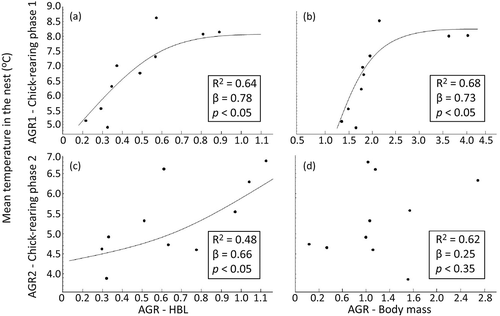Figures & data
Figure 1. Nest temperatures (mean ± SE) in phase 1 (20 July–2 August) and phase 2 (5–8 August) of the chick-rearing period, and during the post-breeding period (25–27 August). All inter-nest differences are significant (random effects ANOVA, p > 0.05, N = 1296 temperature records for each nest; separate analyses for particular phases), except for those shown by horizontal lines.
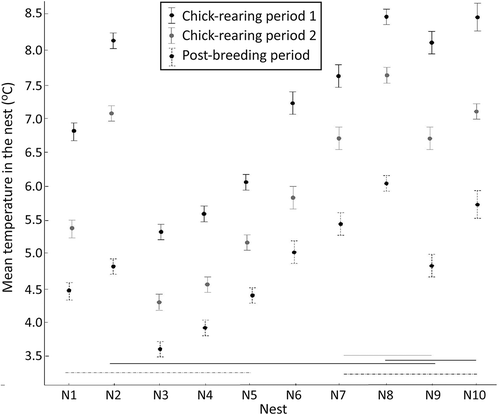
Figure 2. Mean ± SD nest temperatures in the 24 hr cycle (mean value from three loggers for a three-day period) in three nests (different altitude) in (a) phase 1 (20 July–2 August), (b) phase 2 (5–8 August) of chick rearing and (c) during the post-breeding period (25–27 August). The thermoneutral zone of little auks (4.5°C; Gabrielsen et al. Citation1991) is shown by the horizontal black line. The “day” and “night” hours are shown at the bottom of the graph by the horizontal light and dark grey bars, respectively.
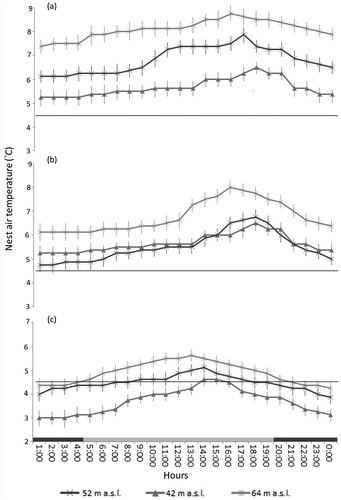
Figure 3. Relationship between nest temperature (mean ± SD, mean daily temperatures calculated from the three locations in a burrow during consecutive three days) and altitude in nests during two chick-rearing phases and the post-breeding period. Regression lines are shown for significant relationships.
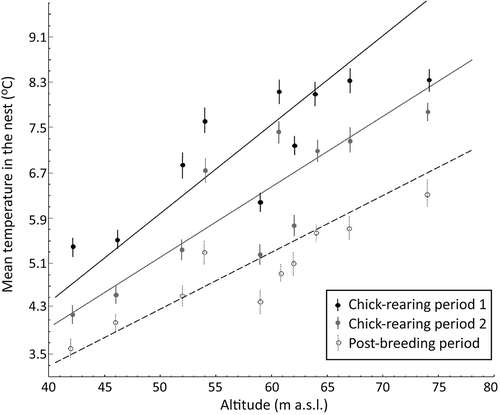
Table 1. Nest and ambient temperatures (mean ± SE) during the post-breeding period (25–27 August), results of paired sample t-tests for each nest with its altitude, and the difference between ambient and nest temperatures. Significant differences (p < 0.05) are shown in boldface.
Table 2. Comparisons of 24 hr distributions of nest and ambient temperatures. Student t-tests comparing the difference between “night” and “day” ambient and nest temperatures during the post-breeding period (24 hr cycle, 25–27 August). Significant differences (p < 0.05) are in boldface.
Figure 4. Temperature inside nests and ambient (outside) temperature (mean ± SE) during the post-breeding period (25–27 August). The arrows indicate significant differences between nests and ambient temperatures for particular burrows (paired samples t-tests, p < 0.05, N = 432).
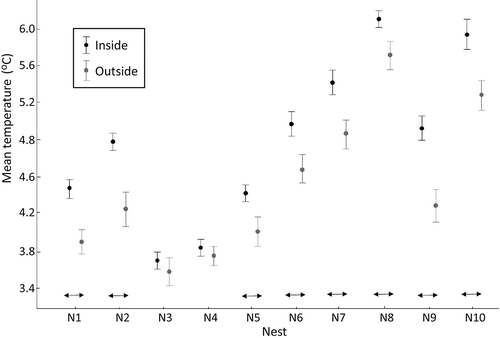
Figure 5. The mean ± SD nest and ambient temperatures in the 24 hr cycle in three nests (different altitude) during the post-breeding period (25–27 August). The thermoneutral zone of little auks (4.5°C; Gabrielsen et al. Citation1991) is shown by a horizontal black line. The “day” and “night” hours are shown at the bottom of the graph by the horizontal light and dark grey bars, respectively.
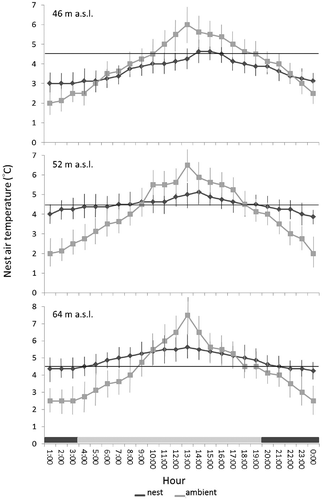
Figure 6. Relationship between mean nest temperatures in phase 1 (30 July–2 August) and phase 2 (5–8 August) of the chick-rearing period and the AGR of little auk chicks (AGR1 and AGR2) based on (a, c) HBL and (b, d) body mass. Regression lines are shown for significant relationships.
